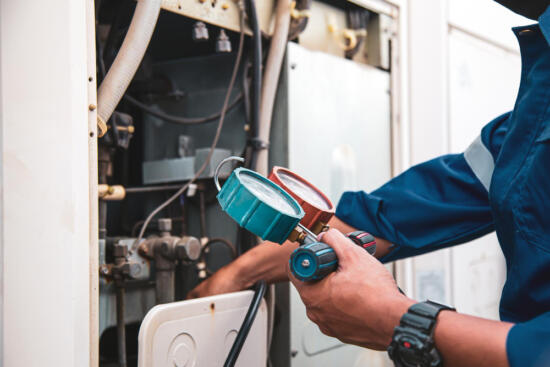Are you tired of running out of hot water in the middle of your shower? Do you wish you had more space in your RV? If so, it might be time to consider installing an on-demand tankless water heater. These compact, efficient devices provide hot water exactly when you need it, taking up less space and often saving energy in the process. But how do you go about installing one? Let’s dive into the details.
Why Choose a Tankless Water Heater?
Before we get into the nuts and bolts of installation, it’s worth understanding why a tankless water heater might be the right choice for you. Unlike traditional water heaters, which store and continually heat a large tank of water, tankless models heat water directly as it flows through the unit. This means you never run out of hot water, and you’re not wasting energy keeping a tank warm when you’re not using it. Plus, their compact size makes them perfect for smaller spaces like RVs.

Preparing for Installation
Before you rush out and purchase a RV tankless water heater, there’s some homework to be done. First, you’ll need to know how much water you plan on using, as this will determine the size and power of the heater you need. Do you want to be able to run the shower and the dishwasher at the same time? That will require a larger unit than if you just need hot water for a single faucet.
Next, you’ll need to evaluate the available space in your RV. Tankless water heaters are smaller than traditional models, but they still need a specific amount of space for safe operation, especially when considering the requirements for ventilation and access for servicing.
Finally, think about the type of power you intend to use. Most RV tankless water heaters run on propane, but some models can use electricity. Your choice will depend on your RV’s setup and your personal preferences.
Finding the Right Model
Armed with this information, you’re ready to start shopping. You’ll likely be surprised at how quickly you can narrow down your options and create a shortlist of suitable models. But remember, don’t make the mistake of choosing solely based on price. Quality is essential when it comes to something as vital as your hot water supply.
The Importance of Professional Installation
Once you’ve chosen your tankless water heater, the next step is installation. While it might be tempting to tackle this as a DIY project, we strongly recommend hiring a professional. This is not just a simple matter of connecting a few pipes. Installation of a tankless water heater involves understanding complex plumbing, electrical, gas, and venting systems. Plus, there may be local regulations and codes to adhere to.
A professional with experience in tankless water heater installations will ensure that the job is done safely and correctly, avoiding costly mistakes down the line. They can also give you a walkthrough of how to operate and maintain your new heater, ensuring you get the most out of your investment.
Operating Your New Tankless Water Heater
Once your new water heater is installed, operating it is a breeze. Simply connect your RV to a water supply, ensure the bypass valve is open to allow water into the heater, and you’re good to go.
Operating your water heater is as simple as turning on a faucet. When you turn on the hot water, the heater will automatically start heating the water as it flows through. No need to worry about running out of hot water or waiting for a tank to heat up. Just endless, on-demand hot water, right when you need it.
Enjoying the Benefits
With your new tankless water heater installed and operating, you’ll be enjoying better, more efficient showers in no time.
Maintaining Your Tankless Water Heater
An essential part of owning a tankless water heater is understanding how to maintain it properly. Regular maintenance will ensure that your device continues to operate efficiently and lasts as long as possible.
Firstly, it’s important to note that you should refer to your manufacturer’s guidelines for specific maintenance procedures. However, there are some general practices that are usually recommended.
Regularly Clean and Descale
Depending on your water hardness and usage, mineral scale can build up in your tankless water heater over time, leading to decreased efficiency or even damage. Regularly descaling your unit can prevent these problems. The frequency of descaling can vary, but a good rule of thumb is to do it annually.
Inspect for Leaks
Regularly inspect your tankless water heater for leaks or damage. Even a small leak can lead to significant water damage over time. If you notice anything unusual, contact a professional for repairs.
Clean the Air Filter
If your unit has an air filter, it should be cleaned regularly to ensure the unit can ‘breathe’ properly. A clogged filter can lead to decreased performance and even damage to the unit.
The Wrap Up
Deciding to install a tankless water heater in your RV is a big step, but one that can have numerous benefits. With the right preparation and a professional installation, you can enjoy endless hot water, save space, and potentially lower your energy costs. Plus, once it’s installed, operation and maintenance are straightforward.
While the process may seem daunting at first, following these steps can help make the journey a lot smoother. Do your homework, choose the right model, hire a professional for installation, and maintain your unit properly. Before you know it, you’ll be enjoying those hot showers in your RV without the fear of running out of hot water. Enjoy the comfort and convenience

Jay
Jay is a health and wellness enthusiast with expertise in water quality and nutrition. As a knowledgeable advocate for holistic well-being, Jay successfully manages Type 2 Diabetes through informed lifestyle choices. Committed to sharing reliable and authoritative insights, Jay combines firsthand experience with a passion for enhancing health."

